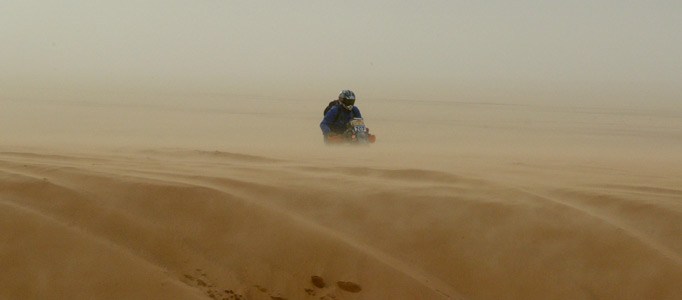Following the tragic news of Michal Hernik’s death on Tuesday, authorities have today revealed the driver death was caused by hypothermia and dehydration. Polish motorcyclist Hernik becomes the fifth death during the Dakar Rally since the race switched to South America in 2009.
San Juan/Chilecito
The search for Hernik began when his Irritrack signal was lost during the final moments of stage three. When it was discovered the motorcycle rider did not complete the stage, a search began to find the missing competitor. Hernik’s body was found by an Ambulance helicopter. A statement from the race organisers read: “An ambulance helicopter found the rider 300 metres off the route at 4.03. Unfortunately, the on-board doctor could only confirm the rider’s death. The whole Dakar family offers its condolences to Michal’s family, close friends and team.”
RIP Michal Hernik... Killed today while riding in the Dakar Rally. #Dakar2015 pic.twitter.com/qedO6aGuYb
— Dave Humphreys (@LordHumphreys) January 6, 2015
Adventurous Spirit
Hernik had previously participated in several rallies across Africa and the Middle East, including the Morocco Rally and the Abu Dhabi Desert challenge. One criticism of these rallies taking place in Africa is the sense of poverty tourism, where wealthy racers travel past areas of great poverty as nothing more than sightseeing routes on the course. This argument could not be levelled at Hernik, as he and a friend helped sponsor the building of an orphanage in Yaounde, Cameroon.
A statement on the rider’s website described Hernik as being a “humble, understanding, inspiring, sensitive and a positive visionary, boldly reaching his dream”.
A death in the Dakar Rally: Michal Hernik was 39 | News http://t.co/dDI8UkNhEs pic.twitter.com/RkOldJs9rn — One World Race (@OneWorld_Race) January 7, 2015
Notorious Race
The Dakar Rally has become somewhat infamous for the number of deaths occurring since its inception in 1979. Over 50 racers and spectators have died, with Hernik the 24th racer to die. There have also been allegations that livestock and villagers were killed by racers, when the race was held in Africa. With the nature of the race leaving no way of confirming these reports, the Rally has become known as much for its danger as its thrilling racing and landscapes.
The Rally was forced to move location in 2008 when the terrorist threat in Mauritania grew too large. Its move across the Atlantic has led to participation dropping as European competitor numbers have fallen. The 2015 race continues until the 17th of January.
More from the Creditplus blog:
Beginner’s guide to the Dakar Rally – An introduction to the iconic off road race.
Beginner’s guide to the Formula E – Everything you need to know about the new electric only motorsport.





 Facebook
Facebook Twitter
Twitter Instagram
Instagram LinkedIn
LinkedIn Youtube
Youtube